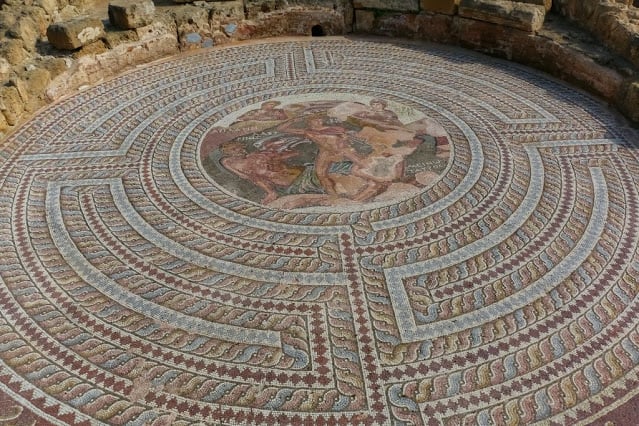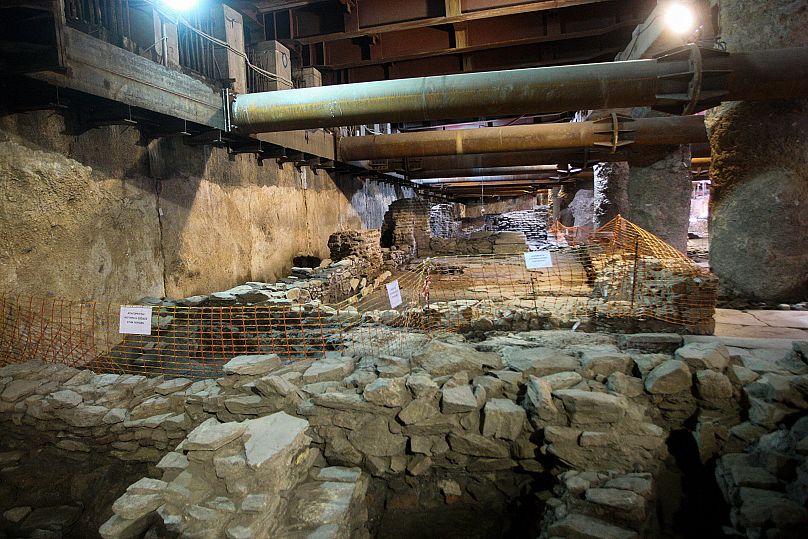It was July 31, 1801, when Thomas Bruce, the 7th Earl of Elgin, Ambassador of the United Kingdom in Constantinople, chipped away the first Parthenon sculptures in Athens so that he could take them to Britain. This would ultimately become the beginning of a two-century-old story of a cultural dispute between two friends and allies: Greece and the UK.
Lord Elgin’s real name was Thomas Bruce. He had the titles of the 7th Earl of Elgin and 11th Earl of Kincardine. He was born on July 20, 1766, in Scotland, to the formerly royal house of Bruce. He was the second son of Charles Bruce, 5th Earl of Elgin and his wife Martha Whyte, who were living in Fife, near Edinburgh.
Apart from being a prominent nobleman in Scotland, Bruce was also a keen military man. He entered the British Army as an ensign in the Scots Guards in 1785. Following years of successful advancing in the rankings of the Army, he was promoted to Colonel in the Army in 1802, to Major General in 1809, and to Lieutenant General in 1814; all these while he was also serving as a diplomat.ten
His diplomatic career began in 1791 when he was sent as a temporary envoy extraordinary to Austria. He also served in various diplomatic posts representing Britain in Brussels, Prussia, and of course, Constantinople. He arrived there on November 6, 1799, and his tenure as ambassador to the Ottoman Empire lasted between 1799 and 1803.
The Scottish diplomat, apart from being a successful military officer, was also a passionate art collector. Thus, in May 1800, a few months after he assumed the prestigious office of the Ambassador of the United Kingdom to the Ottoman Empire, he sent embassy secretary William Hamilton to the occupied town of Athens.
In the early 19th century, the once-buzzing metropolis of the ancient world, was nothing more than a shadow of its former self, a small town in the southern part of the European provinces of the vast Ottoman Empire.
Forgotten by time and its own inhabitants, the city that once ruled the known world was nothing more than a place of ruins, with a few thousand people, mostly peasants, living under the shadows of the glorious past.
This was probably the reason why Elgin was so fascinated with Athens. Its universally priceless monuments were calling to him, as he wanted them to become his own personal property back in Britain, rather than leaving them to stay unappreciated in a small Ottoman town.
Elgin hired a famous Neapolitan painter, Lusieri, and several other skillful draftsmen and modelers from abroad and tasked them with going to Athens for an important mission: To categorize the monuments of the city and see what they could take from it. Unfortunately for him, however, very limited facilities and permissions were granted to them by the Ottoman authorities.
In an interesting turn of events, though, just when international geopolitics led Constantinople into an alliance with Great Britain against France, Elgin seized the opportunity to personally benefit and acquire a huge collection of antiquities.
In 1801 Elgin managed to obtain a letter from Kaimakam Segut Abdullah, who was at that time replacing the Grand Vizier in Constantinople. The letter urged the local Ottoman authorities in Athens to allow Elgin’s people to perform excavations around the Acropolis, provided that they would not damage the monuments.
This was it: Elgin had gotten what he had lusted after so long.
From 1801 to 1804, Elgin’s crews worked tirelessly, removing the priceless treasures from the Acropolis of Athens. Of course, the instruction that they had to make sure that none of the monuments would become damaged was never followed by Elgin’s crew.
By causing considerable damage to sculptures and the monument itself, detaching and dividing a significant portion — about half — of the sculptures decorating the Parthenon, along with some architectural pieces, Elgin’s workers literally butchered one of the most important monuments on the earth. The removable antiquities were to be packed in boxes and transported by sea to England.
The first metopes from the Parthenon were removed exactly 220 years ago, on July 31st, 1801.
By mid-1802, a total of 12 huge boxes had been loaded onto Elgin’s ship, called the ”Mentor.” The collection consisted of portions of the frieze, metopes, and pedimental sculptures of the Parthenon, as well as of sculptured slabs from the Athenian temple of Nike Apteros, and various other antiquities from Attica and other districts of then-occupied Greece. The ship, however, sank off the shores of Avlemonas on the island of Kythera (known then as Cerigo), while the crew was heading toward the Western Mediterranean. It took three years for divers to recover all the crates containing the antiquities.
Elgin left the Ottoman Empire in 1803; however, Lusieri remained there, adding pieces to Elgin’s collections until 1812 — nine years after Elgin’s return to Britain. When he got back to his home country, notable personalities in Britain accused him of being a common thief and a vandal who, through improper means like bribery, robbed respected monuments of culture for his own benefit.
The Scottish lord attempted to vindicate himself, as he did not want his reputation to be ruined. In 1810, he issued a pamphlet titled ”Memorandum on the Subject of the Earl of Elgin’s Pursuits in Greece,” where he tried to justify his actions.
As the issue had become a heated topic among the British elite, a recommendation of a British parliamentary committee, which supported the conduct of Elgin in the face of public pressure, ordered the sculptures to be purchased by the British government. This happened in 1816 when London paid Elgin £35,000 (almost £3.5 million in today’s values or $5 million) and deposited them in the British Museum. It is noted that the total cost of Elgin’s operation had been calculated to be approximately £75,000 (£7.5 million in 2021 values), much more than what the British government paid to obtain them.
And, as we all know, the Parthenon sculptures are still exhibited in the British Museum to this day, in a windowless room far from the blazing sunshine of their original home in Athens. Greek governments of the past few decades have been making efforts to repatriate the priceless pieces of world civilization to Athens — but tragically, without any positive results as of yet.









